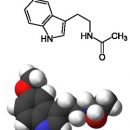What are the manifestations of hyperprolactinemia in women and men? Answer to this question you will find in the article.
Content
Manifestation of hyperprolactiakiyia
 Among women With hyperprolactinemia in typical cases, disorders of the menstrual cycle, infertility, the decrease in the libido, the lack of orgasm (frigidity), the galathery (occurs approximately 70% of women with hyperprolactinemia). A prerequisite for the development of a galactorone is an elevated level of PRL (prolactin) against the background of sufficient content of estrogen in the blood. However, the accompanying hypogonadism, due to the insufficiency of estrogen, leads to a paradoxical cessation of the Galacto.
Among women With hyperprolactinemia in typical cases, disorders of the menstrual cycle, infertility, the decrease in the libido, the lack of orgasm (frigidity), the galathery (occurs approximately 70% of women with hyperprolactinemia). A prerequisite for the development of a galactorone is an elevated level of PRL (prolactin) against the background of sufficient content of estrogen in the blood. However, the accompanying hypogonadism, due to the insufficiency of estrogen, leads to a paradoxical cessation of the Galacto.
Hyperprolactinemia is detected in 15-20% of women with secondary amenorrhea or oligomenorea; About 30% of them have a galathery or infertility and in 70% - a combination of galactoria and infertility.
Husband Manifestations of hyperprolactinemia can be a decrease or absence of libido and potency (50-85%), a decrease in secondary sexual features (2-21%), infertility due to oligospermia (The amount of sperm in sperm compared to the norm) (3-15%), gynecomastia (6-23%). Galactere (Isolation of milk, colostrum or milk-like fluid from one or both of the thoracic glands) It is very rare (0.5-8%), probably due to the lack of preliminary stimulation of the informs of estrogen.
Often the reason for the first visit to the doctor in most men with prolactinist is to reduce visual acuity and / or limit the fields of view, t.E. There is a later diagnosis (compared to women) at the stage of visual disorders. It may be due to the fact that women have more objective symptoms - a disturbance of the menstrual cycle, which in earlier time leads them to the gynecologist. Since men's clinical symptoms are more subjective, this is not always on time allows the patient to consult a doctor. The presence of a decrease in sexual entry and potency is attributed to the patient himself to age-related changes. Some patients of younger and middle-aged in the early stages of the disease do not pay for medical care due to the presence of a weak type of sexual constitution, psychopathological traits, sometimes, in the absence of sexual motivation, they are given or forced to be examined by partners.
It often occurs erroneous diagnostics - patients will be treated for a long time in sexopathologists, urologists about impotence, and with visual impairments - in ophthalmologists with various diseases (atrophy of the optic nerve, chorioretinite, neuritis, optochiasmal arachnoiditis, retrobulber neuritis).
In sexual dysfunction in men, hyperprolactinemia is revealed in 0.4-11% of cases, and in some studies reaches 20%, so the study of the level of the PRL in the blood is an important step in the diagnosis of the causes of impotence.








